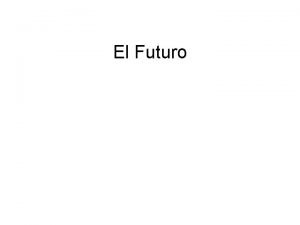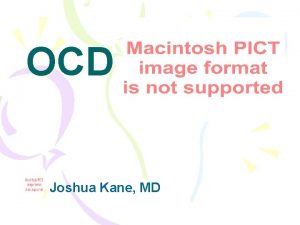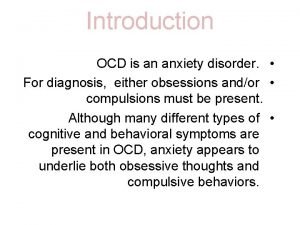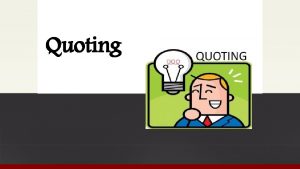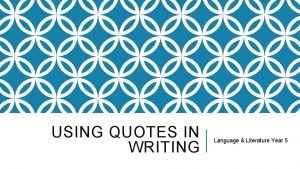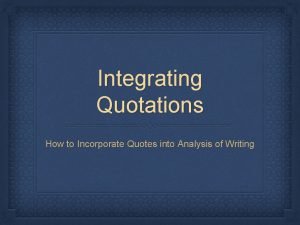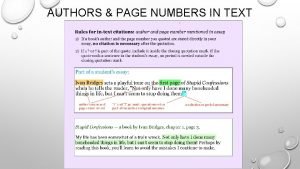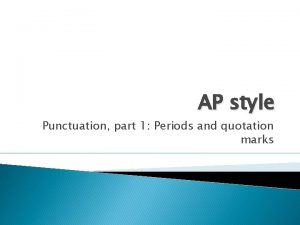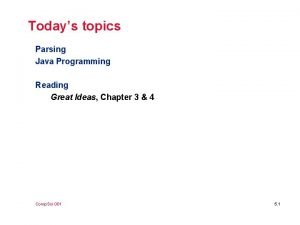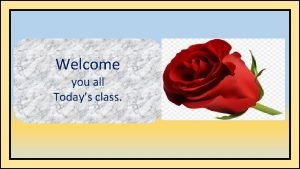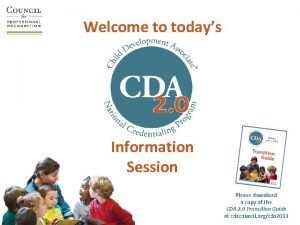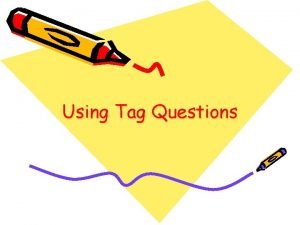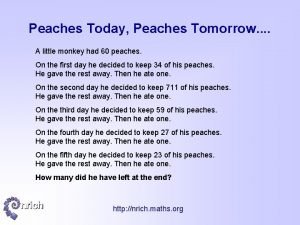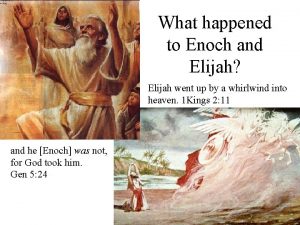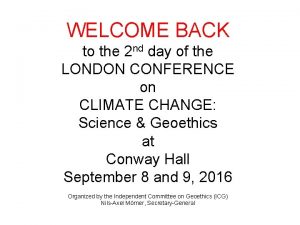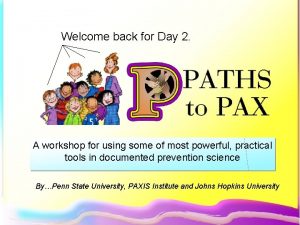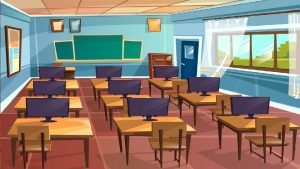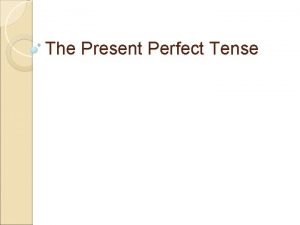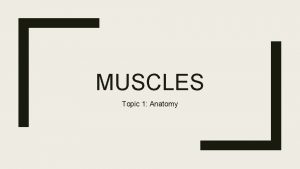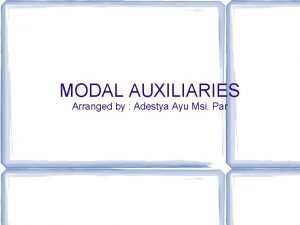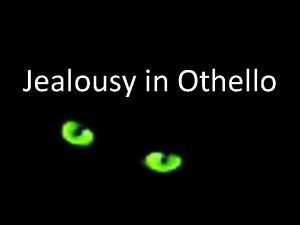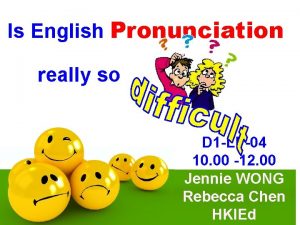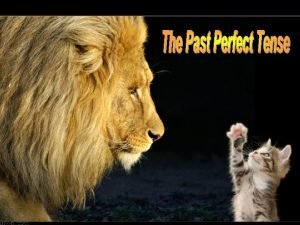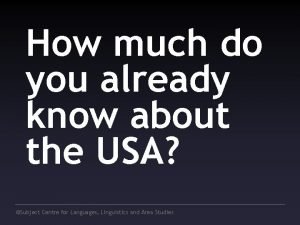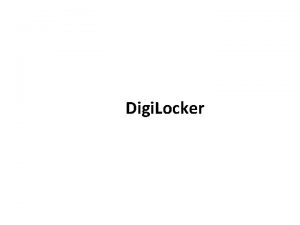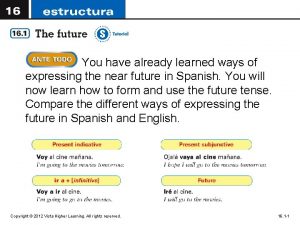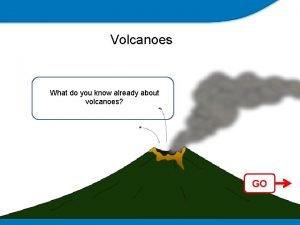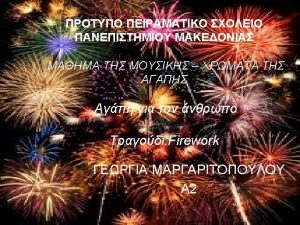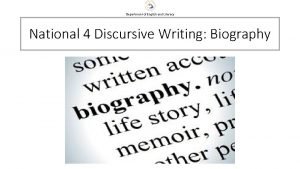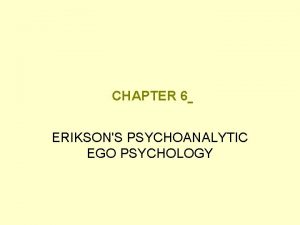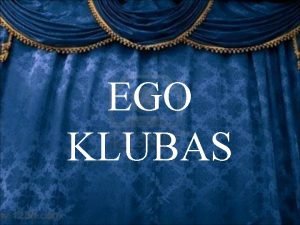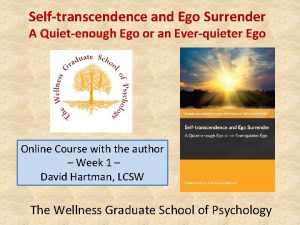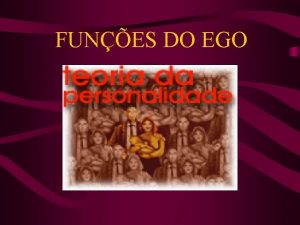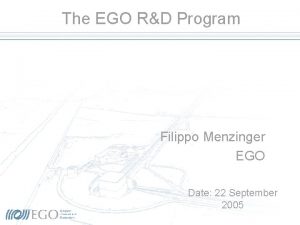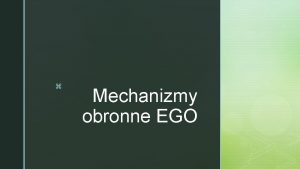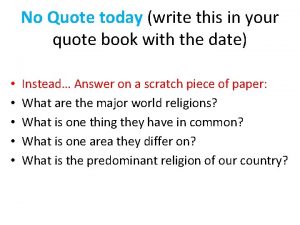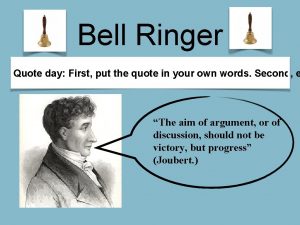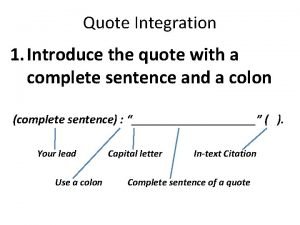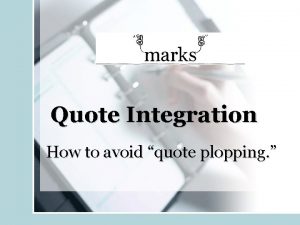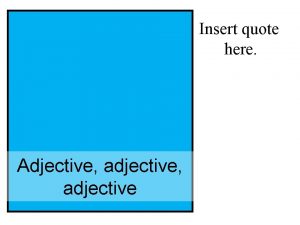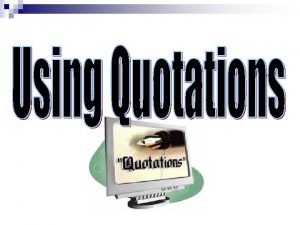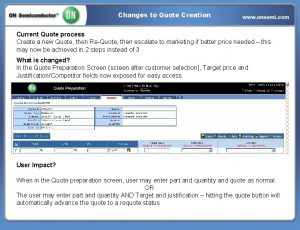DAY 3 ALREADY TODAY Welcome Quote Topics Ego


































































- Slides: 66


DAY 3 ALREADY!

TODAY Welcome Quote Topics – Ego States, Transactions Affirmations 6 minutes … Workbook - Contracts Supervision arrangements

EGO STATES P A C

EGO STATES Parent ego state P Behaviours, thoughts & feelings copied from parents or parental figures Adult ego state A Behaviours, thoughts & feelings which are direct responses to the here-and-now C Child ego state Behaviours, thoughts & feelings replayed from childhood

EGO STATES Berne defined an ego state as: “A consistent pattern of feeling and experience directly related to a corresponding consistent pattern of behaviour. ” (Principles of Group Treatment, Berne, 1966, And as quoted in TA Today, Stewart & Joines 2012, p 15)

WHERE IT ALL STARTED FROM Glover (1932/1956, 1943/1956) Freud (1937) Hartman (1939) Federn (1934/1956) Weiss (1950)

THE CONTINUING JOURNEY Berne adapted Federn’s model “that, as well as being experienced internally or intrapsychically, each category of ego states is shown in a distinctive set of behaviours” (cf Stewart, 1992). ” Ref: Tudor 2010

AND ON. . “Berne (1961/1975) defined ego states “phenomenologically as a coherent system of feelings related to a given subject, and operationally as a set of coherent behaviour patterns, or pragmatically, as a system of feelings which motivates a related set of behaviour patterns. ” Tudor 2010

PSYCHIC ORGANS From the findings of Penfold (surgeon & neuropathologist) – Weiss pointed out what Penfold proved: “Berne’s words: “that ego states of former age levels are maintained in potential existence within the personality. ” Ref: Tudor 2010

WEISS & BERNE Berne – divided personality into 3 states of mind and their related patterns of behaviour. Suggested that all 3 exist as psychic organs: 1. Archeopsyche 2. Exteropsyche 3. Neopsyche (respectively) = Complete personality and structure of personality Weiss Berne child ego Child ego state (archeopsyche) psychic presence or mental image of another ego Parent ego state (exteropsyche ) current ego state Adult ego state (neopsyche)

HOLLOWAY “There is a general principle in science, that function arises from structure. At times it is possible to explore intimately a structure and thus to understand the mechanisms by which it produces the functional display. ” (pg 175)

WHERE ARE WE UP TO? Structure sits under the function It manifests (shows us through the ‘function’) what is underneath (in the ‘structure’) SO. . . Functional ego states are divided to indicate how they are shown in behaviour Structural ego states shows what the ego states have in them, their CONTENT Ref: Stewart & Joines

A METAPHOR TO HELP UNDERSTAND EGO STATES Structural = WHAT Component Parts Functional = HOW Description

EXERCISE What other metaphors might work better for you when thinking about structure and function of ego states?

PSYCHIC ORGANS Archeopsyche (Child) – (think old/primitive - archeo) biological needs most primitive part operates at a feelings level stores our experiences in meeting our needs If our physical and psychological needs are not met a tension is created - this ‘drives’ us to take action to satisfy our hungers.

PSYCHIC ORGANS Exteropsyche – (think ‘from outside’ – exterior) orders the structuring of external operations stores the messages about how to do things in ways which will enable us to meet our needs constantly updated from current events (particularly as new authority figures are encountered) serves as a library of behavioural blueprints for survival in our world

PSYCHIC ORGANS Neopsyche (think new - newest) reasoning, computer-like organ (weighs probabilities and considers consequences) takes information archeopsyche about our needs exteropsyche about ways to satisfy those needs it then decides whether we will take action and how

HOLLOWAY – RELATIONSHIP EGO STATES & PSYCHIC ORGANS ‘ego states are behaviourally displayed and are the net result of all of one’s internal psychic operations’. Ego states are ‘Functional’ and psychic organs are ‘Structural’ – there is a dialogue between the 2 – they are inextricably linked.

BERNE - SUPEREGO, EGO AND ID superego, ego and id are concepts Parent, Adult and Child represent psychological, historical and behavioural realities Compared (but not identical) superego - Parent ego – Adult id - Child each also influenced all three ego states to some extent. Ref: Berne, E. (1961) Transactional Analysis in Psychotherapy Grove Press (p. 29)

FIRST ORDER CONTENT - HAY Content – personality structure Internal Parent Internal Adult From these ego states – motivated to behave in certain ways Internal Child

SECOND ORDER STRUCTURAL MODEL P 3 P 3 Parent P 2 A 3 A 3 C 3 C 3 Adult A 2 P 1 Child C 2 A 1 C 1

P 2 & P 3 (PARENT IN THE PARENT) P 2 P 3 A 3 C 3 P² trained camcorder on our parents (and other primary care givers) is filed into P³ (Parent P 3 in the Parent P 2) the message from our parent. The explanation they gave us as to why the message is important is filed into A³ (Adult A 3 in the Parent P 2), and any “secret” or covert implications are stored in C³ (Child C 3 in the Parent P 2). These parental messages are referred to as introjects.

EXERCISE Who were your primary care givers? What messages did you take on board from each of those primary care givers? Their Parent, Adult, Child

SECOND ORDER STRUCTURAL EGO STATES Older Siblings Father Grandparents Mother Other Authority Figures PP P P 2 AA A P P Internalised aspects of parental ego states – their A A thinking, feelings and behaviours CC C Processing Information A 2 P 1 Parent in the Child – Electrode – internalised recordings of P 1 C 2 A 1 C 1 conditioned decisions, feelings and behaviours which were originally made and experienced and may still be used to deal with people seen as authority figures A 1 Adult in the Child – Little Professor – source of creative and intuitive thinking plus internalised recordings of earlier Little Professor thoughts C 1 Child in the Child – Somatic Child – source of uncensored feelings and needs plus recordings of unconditioned earlier feeling responses to earlier events

STRUCTURAL ANALYSIS – SECOND ORDER Parent (P 2) P 3 A 3 C 3 Adult (A 2) Child (C 2) A 2 P 1 A 1 C 1 Our own thinking about those messages becomes part of our A 2 Content Our Fantasy about what would happen if we didn’t follow these messages, stored in P 1 The Feelings we have in response to those fantasies, stored in C 1 Our early Decision about what to do, stored in A 1

HOW P 3, A 3 & C 3 INFORMATION IS STORED P 3 Values and opinions Can be passed down through generations E. g. Children should be seen and not heard A 3 Reasons for the values and opinions Collection of statements about reality – heard from the big people C 3 My perception of their Child Access stored memories of them – may recall their Child feelings, thoughts or behaviours

EXERCISE Draw the 3 circles and choose a person who was significant in your life (the size of circles is significant) Working intuitively, identify the P 3 memories – values, opinions Working intuitively, identify the A 3 given reasons for the values and opinions Working intuitively, identify the C 3 perception of their Child

CHILD EGO STATE P 1 Parent in the Child – Electrode – internalised recordings of conditioned decisions, feelings and behaviours which were originally made and experienced and may still be used to deal with people seen as authority figures A 1 Adult in the Child – Little Professor – source of creative and intuitive thinking plus internalised recordings of earlier Little Professor thoughts C 1 Child in the Child – Somatic Child – source of uncensored feelings and needs plus recordings of unconditioned earlier feeling responses to earlier events P 1 A 1 C 1

A 2 STRUCTURAL ADULT EGO STATE behaviours, thoughts and feelings are a direct response to the here and now are managed. The ego state is nothing to do with the past but is about appropriate here-and-now responses. A 1 - Little Professor, (intuitive and creative) A 2, the second Adult -linear and logical. Processing - makes assessments logically and mostly without emotion, collects and stores information from many different sources – from the environment around the individual as well as from his other ego states. “The creativity of A¹, honed by the logic of A², is behind every great idea and advance of civilization” Ref: Woollams and Brown (1978)

INTERNAL ADULT A processing unit – we use it to “access our memory banks and to process and store new data” (Hay, 1993). takes in information from the world monitors our reactions in Internal Child for relevance to situation Scans Internal Parent for some recordings of responses that we can use appropriately now.

INTERNAL ADULT From our Internal Adult, we can very quickly process information and make decisions about how to behave – and hence choose the appropriate behavioural ego state. “characterises a pulsating personality, processing and integrating feelings, attitudes, thoughts and behaviours appropriate to the hereand-now – at all ages from conception to death” Tudor 2003

BACK TO THE BEGINNING - EGO STATES Parent ego state Behaviours, thoughts & feelings copied from parents or parental figures Adult ego state Behaviours, thoughts & feelings which are direct responses to the here-andnow Child ego state Behaviours, thoughts & feelings replayed from childhood

HOW TO DIAGNOSIS EGO STATES Behavioural what do we observe? Is the person scowling like a parent figure, fidgeting like a small child, or looking balanced and grounded? This is the most important of them all, the other 3 act as checks Social how do other people react? Do they respond as if to a parent, to a child, or to an adult? Historical is the current behaviour similar to behaviour the person has displayed in the past (Child ego state) or to the behaviour of someone else from their past (Parent ego state)? Phenomenological how does the person experience himself? Do they feel as if they are in the here-and-now, or like a little person, or like a parent?

HOW TO DIAGNOSIS EGO STATES Behavioural what do we observe? Is the person scowling like a parent figure, fidgeting like a small child, or looking balanced and grounded? This is the most important of them all, the other 3 act as checks Words Tones Gestures Postures Facial expressions Congruence and Incongruence of the behaviours

FUNCTIONAL EGO STATES Controlling Parent + + CP NP _ _ Adult A Adapted Child + + AC FC _ _ Nurturing Parent Free Child

EXERCISE Identify behaviours that fit with each of the Behavioural Ego States What are the potential pitfalls of identifying ego states? What is the value/benefits of identifying ego states?

EXCLUSION OF EGO STATES Excluded Parent • Makes own rules in every situation • Is adept at using intuition to sense what is going on around them • May behave irresponsibly and without conscience e. g. ‘con merchants’

EXCLUSION OF EGO STATES Excluded Adult • No Adult ability to test reality • Switches between Parent and Child ego states • Thoughts and behaviours may be bizarre May be diagnosed as psychotic/bi-polar

EXCLUSION OF EGO STATES Excluded Child • Shuts out memories of childhood • Has very little fun, does not get close to anyone, and expresses very few feelings May occur in victims of severe trauma in childhood

CONTAMINATION OF EGO STATES Parent Contamination (prejudice) Mistaking Parental beliefs and messages for Adult reality • The Government can’t be trusted • Teenagers are lazy • If you want something done properly, do it yourself

CONTAMINATION OF EGO STATES Child Contamination (delusion / superstition) Mistaking Child beliefs for Adult reality • People don’t like me • I’m not lovable • Black cats will bring me bad luck

CONTAMINATION OF EGO STATES Double Contamination Mistaking a Parental message combined with a Child belief for Adult reality • (P) Children should be seen and not heard, with • (C) I’m only OK if I keep quiet

EXERCISE Individually, quickly and intuitively: Identify which ego state is contaminated for each of the statements. Compare your answers.

EGOGRAMS Jack Dusay suggests that “when one ego-state increases in intensity, another or others must decrease in order to compensate. The shift in psychic energy occurs so that the total amount of energy may remain constant”

EGOGRAMS Dusay, J. , Egograms. New Your: Harper and Row, 1977.

EXERCISE Working intuitively and quickly Draw your diagram showing the levels of each and shading in the negative component of each ego state How much of your energy in a typical day do you spend using: Controlling Parent, Nurturing Parent, Adult, Adapted Child Natural or Free Child?

TRANSACTIONS PROPER 3 Rules of Communication The response to the stimulus is appropriate and expected. Communication is open and may continue. The response to the stimulus is unexpected. Communication breaks down or changes. A message triggered by an ulterior motive is sent disguised as a socially acceptable stimulus.

COMPLEMENTARY TRANSACTIONS The response to the stimulus is appropriate and expected. Communication is open and may continue. “Kids are lazy these days!” “Hi, how are you? ” “And they’re all on drugs!” “I’m fine thanks. ”

COMPLEMENTARY TRANSACTIONS “I really like you!” “I like you too!” “Where’s that report? ” “I …I… I’m sorry…, it’s not finished. ”

CROSSED TRANSACTIONS The response to the stimulus is unexpected. Communication breaks down or changes. “Stop bothering me. ” “What’s for dinner? ” “Can’t you ever be serious? ” “Let’s have some fun. ”

ULTERIOR TRANSACTIONS A message triggered by an ulterior motive is sent disguised as a socially acceptable stimulus. “How did you like my report? ” “It was ok. ” (“It wasn’t very good was it? ”) (“I didn’t like it much. ”) “Would you like to come in for coffee? ” (“I want to be with you. ”) “Yes, I’d love a coffee” (“I want to be with you too. ”) S=Stimulus, R=Response, Sp=Stimulus at psychological Ss=Stimulus at social level Rp=Response at psychological level, Rs=Response at social level

ULTERIOR TRANSACTIONS “This is our top item, but probably out of your budget. ” (I’ll shame you into buying this. ”) “I’ll take it!”

EXERCISE Take a set of transactions (packet of various coloured paper): Identify the ego state for the stimulus and response. Identify what were each of the transactions Ø Complementary Ø Crossed Ø Ulterior Ø Blocked

LIFE POSITIONS Stewart & Joines “ … represent fundamental stances a person takes up about the essential value he perceives about himself & others. ” (TA Today 2012 pg 121)

LIFE POSITIONS I’m not OK You’re OK - + I’m OK You’re OK + + Get away from Get on with Give power away Depressive position Em-powered Healthy position I’m not OK You’re not OK - - I’m OK You’re not OK + - Go Nowhere Get rid of Dis-empower Futile and despairing position Power - Control Arrogant or paranoid position

LIFE POSITIONS

LIFE POSITIONS

EXERCISE Write up your reflections on this exercise: What did you notice for each of the positions? When are you most likely to use your ‘preferred’ position? What are the implications in your personal life? What are the implications in your professional life? What will you do about your observations?

SUPERVISION“: WORKING TOGETHER TO DEVELOP INSIGHT THAT OPTIMISES GROWTH

SUPERVISION

Supervision is “An opportunity to bring someone home to their own mind, to show them how good they can be, to demonstrate how problems can be solved and dignity gained” Ref: Kline, N. Time to Think Listening to Ignite the Human Mind

Dates for Supervision? ?

MIND MAP OR COLLAGE OUR 3 DAYS LEARNING

A STROKE TO TAKE HOME

 Day 1 day 2 day 3 day 4
Day 1 day 2 day 3 day 4 Already can or can already
Already can or can already Ego syntonic vs ego dystonic
Ego syntonic vs ego dystonic Ego syntonic vs ego dystonic
Ego syntonic vs ego dystonic Ego freud
Ego freud Day 1 day 2 day 817
Day 1 day 2 day 817 How to quote a quote apa
How to quote a quote apa Dialogue quote vs flow quote
Dialogue quote vs flow quote Integrating quotes
Integrating quotes Dialogue quote vs flow quote
Dialogue quote vs flow quote Ap style quote punctuation
Ap style quote punctuation Reading for today topics 5
Reading for today topics 5 For today's meeting
For today's meeting Today class or today's class
Today class or today's class Proposal kickoff meeting agenda
Proposal kickoff meeting agenda Fingerprint ridge characteristics worksheet
Fingerprint ridge characteristics worksheet Today's lesson or today lesson
Today's lesson or today lesson Example of repitition
Example of repitition Today's english class
Today's english class Welcome to today's class
Welcome to today's class Welcome to today's class
Welcome to today's class Welcome to today's session
Welcome to today's session Welcome to today's class
Welcome to today's class Welcome to today's class
Welcome to today's class Welcome to today's class
Welcome to today's class Hello and welcome to today
Hello and welcome to today Welcome to today's session
Welcome to today's session Todays class com
Todays class com Tag questions
Tag questions Monkey and peaches problem answer
Monkey and peaches problem answer Who was enoch
Who was enoch It's raining
It's raining Just for today i will try to live through this day only
Just for today i will try to live through this day only Welcome welcome this is our christmas story
Welcome welcome this is our christmas story Welcome to day 2
Welcome to day 2 Welcome back day 2
Welcome back day 2 Welcome on your first day
Welcome on your first day William beanes elementary school
William beanes elementary school Ocean the part day after day
Ocean the part day after day Day to day maintenance
Day to day maintenance As your room gets messier day by day, entropy is
As your room gets messier day by day, entropy is I don't know tomorrow
I don't know tomorrow What happened on sunday in romeo and juliet
What happened on sunday in romeo and juliet Growing day by day
Growing day by day Seed germination inhibitors examples
Seed germination inhibitors examples Conclusion of seeds
Conclusion of seeds Seeds vs spores
Seeds vs spores I live for jesus day after day
I live for jesus day after day One day he's coming oh glorious day
One day he's coming oh glorious day Day one day one noodle ss2
Day one day one noodle ss2 Dayone dayone noodles ss2 小時光 肆號麵鋪
Dayone dayone noodles ss2 小時光 肆號麵鋪 Already past tense
Already past tense Present perfect simple ever never
Present perfect simple ever never Simple past already
Simple past already Present perfect simple already yet just
Present perfect simple already yet just Starter which muscles do you already know
Starter which muscles do you already know John is over two hours late already
John is over two hours late already You already know in spanish
You already know in spanish Act i-1
Act i-1 I take it you already know of tough and bough
I take it you already know of tough and bough I had my breakfast already
I had my breakfast already How much do you already know about
How much do you already know about A digilocker account already exists
A digilocker account already exists Yo dejar dejaré correr correré invertir invertiré
Yo dejar dejaré correr correré invertir invertiré What do you already know about volcanoes?
What do you already know about volcanoes? Do you ever feel already buried deep
Do you ever feel already buried deep National 4 english
National 4 english

